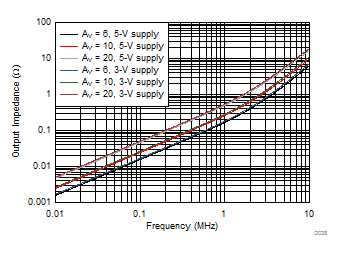ZHCSGM4C August 2017 – October 2023 OPA838
PRODUCTION DATA
- 1
- 1 特性
- 2 应用
- 3 说明
- 4 Revision History
- 5 Device Comparison Table
- 6 Pin Configuration and Functions
-
7 Specifications
- 7.1 Absolute Maximum Ratings
- 7.2 ESD Ratings
- 7.3 Recommended Operating Conditions
- 7.4 Thermal Information
- 7.5 Electrical Characteristics: VS = 5 V
- 7.6 Electrical Characteristics: VS = 3 V
- 7.7 Typical Characteristics: VS = 5 V
- 7.8 Typical Characteristics: VS = 3 V
- 7.9 Typical Characteristics: Over Supply Range
- 8 Detailed Description
- 9 Application and Implementation
- 10Device and Documentation Support
- Mechanical, Packaging, and Orderable Information
封装选项
机械数据 (封装 | 引脚)
散热焊盘机械数据 (封装 | 引脚)
订购信息
7.9 Typical Characteristics: Over Supply Range
at PD = VS+ and TA = 25°C (unless otherwise noted)
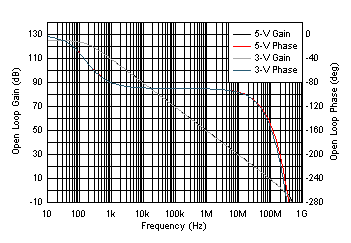
| No load, simulation |
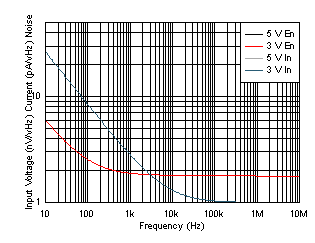
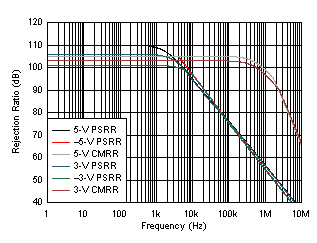
| Simulated results |
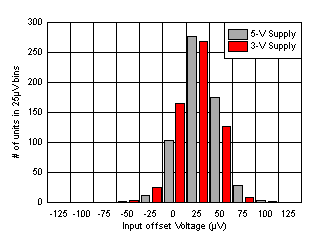
| 600 units at each supply voltage |
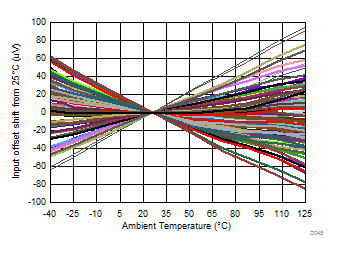
| 51 units at 5-V and 3-V supply |
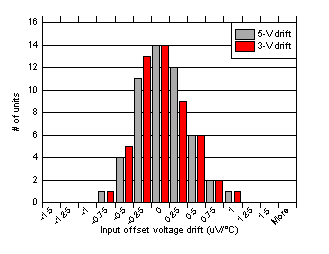
| 51 units at each supply |
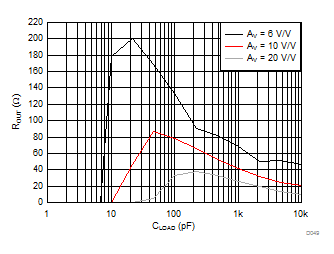
| See Figure 8-6 and Table 9-1 | ||
| small signal, targeting 30° phase margin |
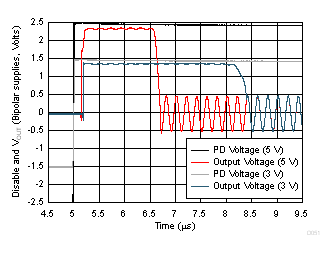
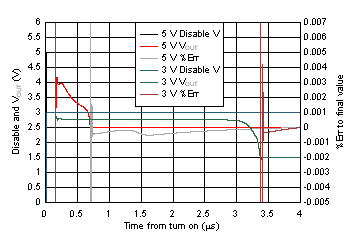
| Single-supply, DC input to produce midscale output (simulation) |
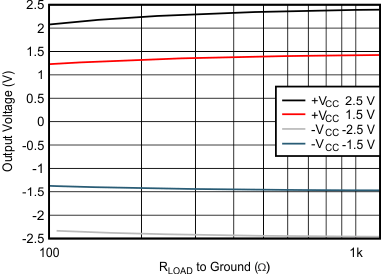
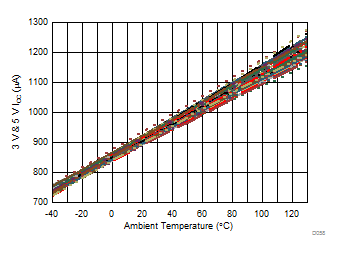
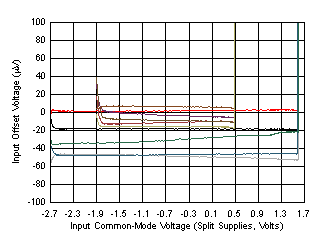
| 5 units, 3-V and 5-V supplies |
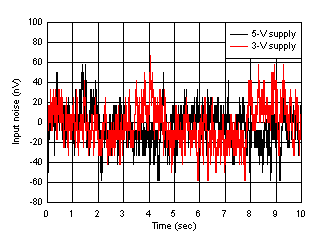
| Input referred |
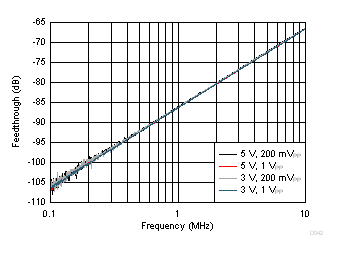
| Measured, AV = 6 V/V, 100-Ω load |
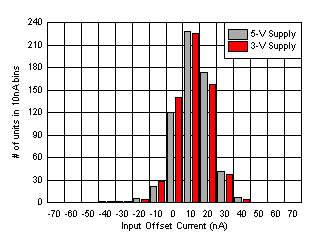
| 600 units at each supply voltage |
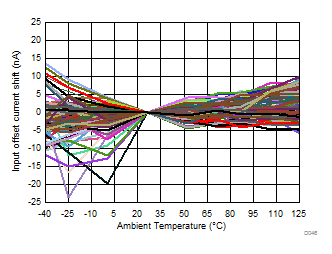
| 51 units at 5-V and 3-V supply |
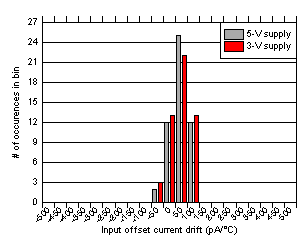
| 51 units at each supply |
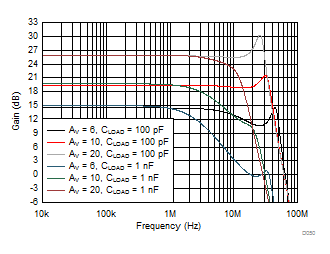
| See Figure 8-6 and Table 9-1 | ||
| 2-kΩ parallel load to C LOAD |
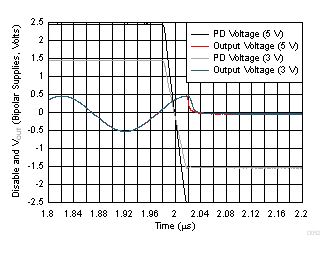
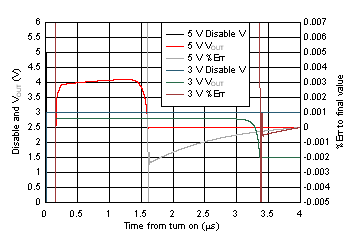
| Single-supply, DC input to produce midscale output (simulation) |
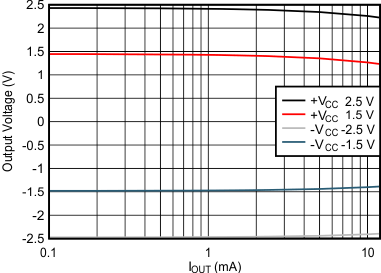
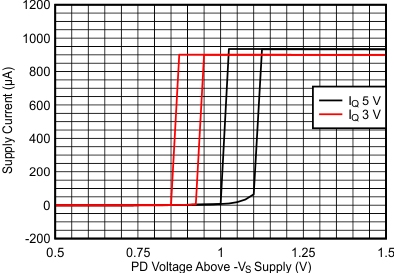
Turn On Higher Than Turn Off
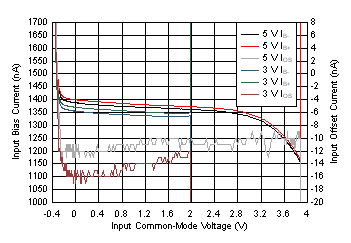
| Measured single device |
